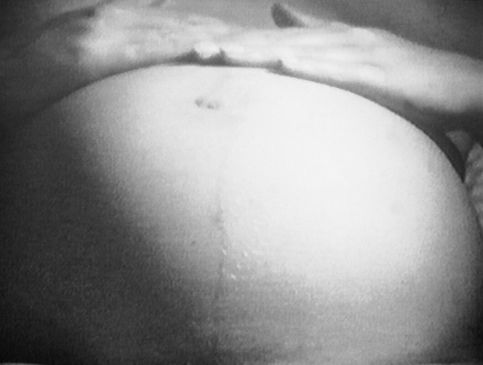Antepartum

Mary Kelly
Antepartum, 1973
Video, black and white, silent, transferred from 8mm film, 1 min 30 sec Edition 2/5
GF0002215.00.0-2001
Artwork text
On the occasion of the first complete presentation of all of the segments of Mary Kelly’s Post-Partum Document at the Generali Foundation in 1998, Antepartum also had its first public showing. Mary Kelly’s preoccupation with pregnancy, childbirth, and early childhood development was again evident in this cinematic document, which the artist had edited to fit in with the exhibition by transferring it from the original 8mm film stock to a video loop. An interest in pregnancy and birthing and a self-confident display of the same was a matter of particular concern to a generation that had been socialized in the second wave of the women’s movement and wanted to make private circumstances publicly negotiable. Stan Brakhage’s Window Water Baby Moving (1959), the documentation of the home birth of his daughter, was one of the first avant-garde works to break down the barriers to these female taboo zones. Susan Hiller, in turn, documented the daily growth of her body during her pregnancy in her work 10 Months (1977-79), combining these progress reports with passages from her diaries. Within its 90-second run, the film captures Kelly’s highly pregnant abdomen in extreme close-up, as the artist softly strokes with both her hands over her bulge in a gesture that appears to be both protective and at the same time an exploration of her new-found body shape. This stroking gesture is also a determinant iconographic detail of Maria Gravida, as it is known from art-historical representations of the pregnant figure of Holy Mary. Kelly’s representation of her pregnancy moves in a sphere beyond any spectacular details, capturing instead the moment with great calm and dignity. In conjunction with Post-Partum Document and Primapara, the work thus forms a comprehensive record of the condition of female lives. (Hemma Schmutz)